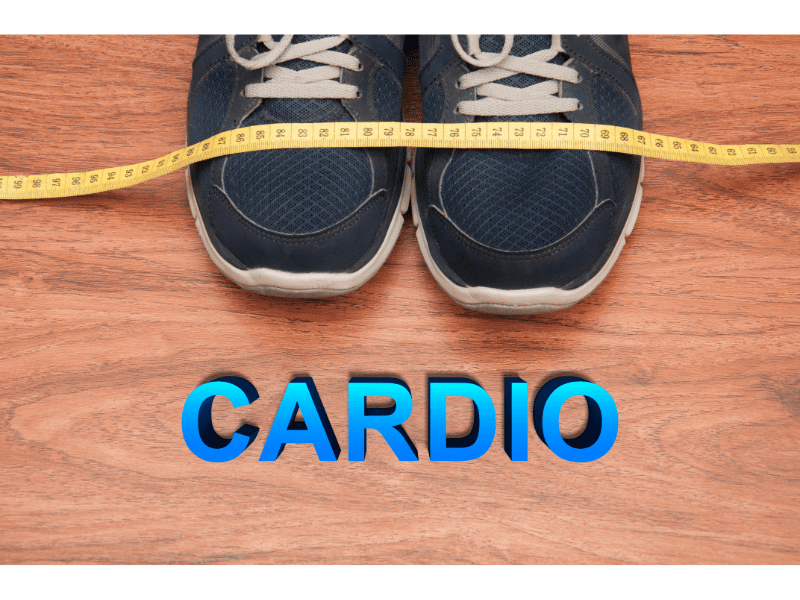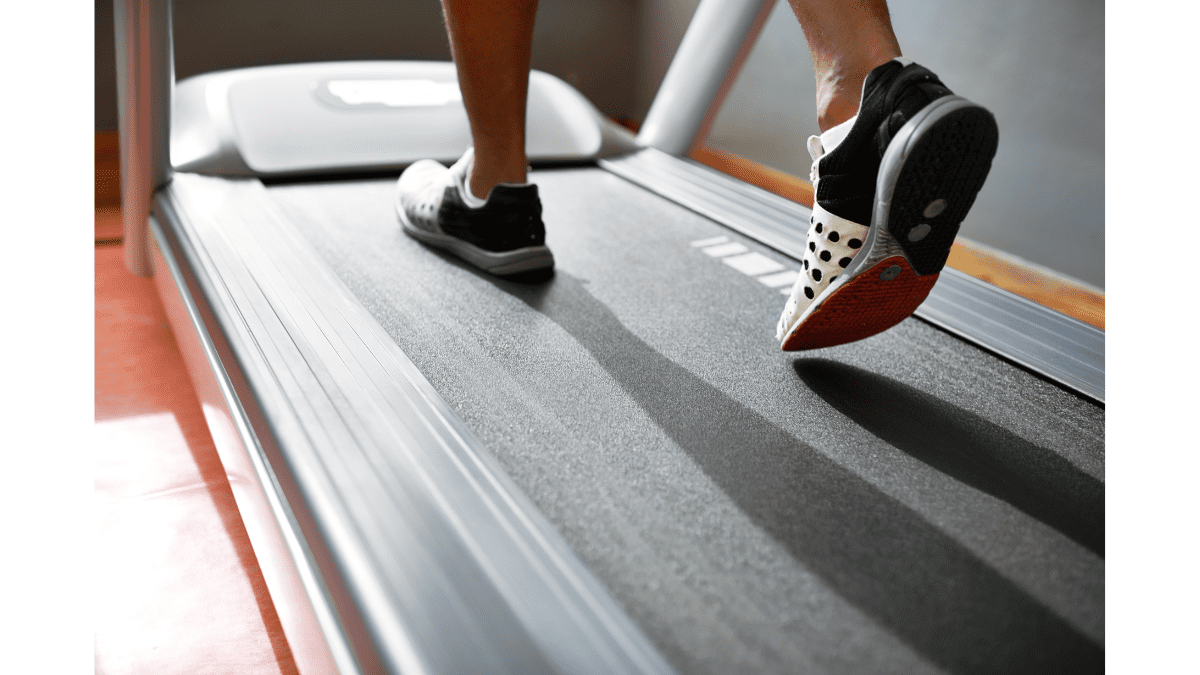Understanding the Role of Cardio in Weight Loss
When it comes to weight loss, incorporating cardio exercises into your fitness routine can play a significant role. Cardio workouts are known for their ability to burn calories and fat, making them an essential component of any weight loss journey. In this section, we will explore the benefits of cardio exercises, how they contribute to weight loss, and some effective fat-burning workouts you can incorporate into your fitness regimen.
By engaging in regular cardio workouts, you can increase your heart rate and improve cardiovascular endurance. This not only helps strengthen your heart and lungs but also enhances overall fitness levels. Additionally, cardio exercises stimulate the body’s metabolism, leading to increased calorie expenditure during and after each workout session.
One of the primary advantages of incorporating cardio into your weight loss plan is its ability to facilitate fat burning. These workouts put your body in a calorie deficit state by burning more calories than consumed. As a result, stored fat is utilized as an energy source during cardio sessions.

Moreover, engaging in consistent cardiovascular exercise promotes overall health and well-being. It can reduce the risk of chronic diseases such as heart disease, diabetes, and certain types of cancer. Additionally, cardio workouts have been shown to boost mood by releasing endorphins – feel-good hormones that alleviate stress and anxiety.
In the upcoming sections of this article, we will delve deeper into specific types of cardio exercises that are particularly effective for weight loss. From high-intensity interval training (HIIT) to steady-state jogging or cycling sessions – we will explore various options that cater to different fitness levels and preferences.
Whether you are just starting on your weight loss journey or looking for ways to enhance your current routine, understanding the role of cardio in weight loss is crucial. By incorporating these fat-burning workouts into your regimen along with a balanced diet plan, you can optimize your efforts towards achieving sustainable weight loss goals.
Table of Contents
The Top 5 Cardio Exercises for Maximum Weight Loss
1. Running: The ultimate calorie burner
Running is often hailed as the ultimate calorie burner and a popular choice for individuals looking to shed some pounds. Not only is it an effective way to burn calories, but it also offers numerous health benefits. In this article, we will explore the various aspects of running for weight loss, including running tips, the difference between outdoor running and treadmill running, and how you can make the most out of your running routine to achieve your weight loss goals. Whether you are a beginner or an experienced runner, understanding these factors can help you optimize your workouts and maximize your results.
Running is an excellent form of exercise that can aid in weight loss when done correctly.
By incorporating certain running tips into your routine, you can boost your chances of shedding those extra pounds effectively. Firstly, it’s important to note the difference between outdoor running and treadmill running. Outdoor running offers various terrains and challenges that engage different muscle groups, making it a more dynamic workout. On the other hand, treadmill running provides a controlled environment with adjustable settings for speed and incline.

To make the most out of your running routine for weight loss, consider these tips:
- Set realistic goals: Determine how much weight you want to lose and set achievable targets. Gradually increase the duration and intensity of your runs over time to avoid burnout or injury.
- Mix up your workouts: Incorporate interval training into your runs by alternating between periods of high-intensity sprints and recovery jogs or walks. This method stimulates fat burning while boosting cardiovascular fitness.
- Pay attention to nutrition: Running alone won’t guarantee weight loss if you’re not fueling your body properly. Maintain a balanced diet rich in whole foods such as fruits, vegetables, lean proteins, and healthy fats to support energy levels and recovery.
- Vary terrain or incline: If possible, try incorporating different terrains into your outdoor runs or adjust the incline on a treadmill workout. This variation challenges different muscle groups and helps prevent plateauing.
- Stay consistent: Consistency is key when it comes to losing weight through running or any form of exercise. Aim for regularity in both frequency (number of days per week) and duration (length of each session).
- Listen to your body: It’s crucial to pay attention to any signs of fatigue or pain during running sessions as pushing yourself too hard may lead to injuries that hinder progress towards weight loss goals.
Remember that everyone’s journey is unique, so find what works best for you. If you’re new to running, start slowly and gradually increase your level of intensity. If you’re experienced, challenge yourself with new routes, distances, or training techniques. By implementing these strategies and staying consistent with your running routine while maintaining a balanced diet, you can optimize your workouts and maximize weight loss results.
2. High-Intensity Interval Training (HIIT): Short but intense bursts of exercise for quick results
High-Intensity Interval Training (HIIT) has gained immense popularity in the fitness world due to its effectiveness in delivering quick results. HIIT involves alternating short bursts of intense exercise with brief periods of rest or lower intensity activity. This form of workout can be tailored to various exercises, such as running, cycling, or bodyweight exercises.
One of the main advantages of HIIT workouts is their time efficiency. Unlike traditional cardio exercises that require longer durations, HIIT sessions typically last between 10 to 30 minutes. The short but intense nature of these workouts allows individuals to maximize their calorie burn and cardiovascular benefits in a shorter amount of time.
In addition to saving time, HIIT offers a range of benefits for both physical fitness and overall health. Research has shown that HIIT increases aerobic and anaerobic fitness levels more effectively compared to continuous moderate-intensity exercise. It promotes fat burning while preserving muscle mass, making it ideal for those aiming for weight loss or body composition improvements.

Furthermore, HIIT has been found to have positive effects on insulin sensitivity and blood sugar control. This makes it a valuable tool for managing diabetes or reducing the risk factors associated with metabolic disorders.
Another advantage of HIIT is its ability to boost metabolism even after the workout is over. This phenomenon, known as excess post-exercise oxygen consumption (EPOC), causes the body to burn calories at an elevated rate even during rest periods following a HIIT session.
However, it’s important to note that HIIT may not be suitable for everyone. Individuals with certain health conditions or injuries should consult with their healthcare provider before starting this type of training. Additionally, beginners should gradually build up their intensity and duration over time to avoid injury.
The high-intensity interval training (HIIT) offers a time-efficient and effective way to improve cardiovascular fitness, burn calories, and achieve quick results in terms of weight loss or body composition changes. Incorporating HIIT into a well-rounded fitness routine can provide numerous benefits for individuals looking to optimize their workouts and overall health.
3. Cycling: Low-impact cardio option with great fat-burning potential
Cycling is not only a popular mode of transportation, but it also offers numerous health benefits, including being a low-impact cardio option with great fat-burning potential. Whether you prefer cycling outdoors or indoor cycling on a stationary bike, this activity can be an effective tool for weight loss. In this article, we will explore the benefits of cycling for weight loss and provide some tips for indoor cycling to help you maximize your results. So hop on your bike or stationary bike and get ready to shed those pounds while enjoying the ride.
Cycling is a fantastic exercise for weight loss, as it not only burns calories but also helps to build muscle and improve cardiovascular fitness. Whether you prefer outdoor cycling or indoor cycling on a stationary bike, this activity can be an effective way to shed those pounds. One of the key benefits of cycling for weight loss is that it is a low-impact exercise, meaning that it puts less stress on your joints compared to other activities like running.
This makes it suitable for people of all ages and fitness levels, including those who may have joint issues or are recovering from injuries. When it comes to burning calories, cycling can be highly efficient. The number of calories burned during a cycling workout depends on various factors such as intensity, duration, and body weight. On average, you can expect to burn anywhere from 400 to 1000 calories per hour while cycling at a moderate intensity.
In addition to calorie burning, cycling also helps in building lean muscle mass. As you pedal against resistance (either outdoors or through adjustable settings on a stationary bike), your leg muscles get stronger and more toned over time. Having more muscle mass increases your metabolism rate which means you’ll burn more calories even at rest.

To maximize your weight loss results through indoor cycling sessions:
- Set specific goals: Determine how many times per week you want to cycle and for how long each session will be.
- Vary your workouts: Mix up the intensity levels during your rides – include high-intensity intervals along with steady-state rides – as this can help accelerate fat burning.
- Monitor your heart rate: Utilize heart rate monitors or devices that track heart rate during workouts so you can stay within target zones for optimal calorie burn.
- Incorporate strength training: Combine indoor cycling with strength training exercises targeting other major muscle groups in order to further increase overall muscle tone and boost metabolism.
- Stay consistent: Consistency is key when it comes to weight loss. Make sure to stick to your cycling routine and gradually increase the duration and intensity as your fitness level improves.
Remember, cycling should be enjoyable, so find a routine that works for you and fits into your lifestyle. With dedication and consistency, you’ll be well on your way to achieving your weight loss goals while enjoying the ride!.
4. Jumping Rope: Fun and intense cardio workout
Jumping rope, a seemingly simple activity from childhood, has emerged as a fun and effective cardio workout for adults. It not only brings back nostalgic memories but also offers numerous health benefits. In this article, we will explore the various jump rope exercises and the different variations of jump rope workouts that can be incorporated into your fitness routine.
Jumping rope is an excellent cardiovascular exercise that engages multiple muscle groups simultaneously. It helps to improve coordination, balance, and agility while providing an intense calorie-burning workout. Whether you are a beginner or a seasoned fitness enthusiast, there are several jump rope exercises that can be tailored to your fitness level.
One popular jump rope exercise is the basic jump, where you simply jump with both feet together while swinging the rope under your feet and over your head. This exercise is great for beginners to get acquainted with the rhythm and motion of jumping rope.
For those looking to challenge themselves further, variations such as the alternate foot jump or high knees can be incorporated. The alternate foot jump involves hopping from one foot to another while maintaining a steady rhythm with the rope. High knees require lifting each knee up towards your chest as you jump over the rotating rope.

To add more intensity to your workout, advanced techniques like double unders or criss-crosses can be implemented. Double unders involve rotating the skipping rope twice under your feet for each single jump, requiring precise timing and coordination. Criss-crosses involve crossing your arms in front of you as you jump through the rotating loop of the skipping rope.
In addition to these exercises, there are various variations of jump rope workouts that can keep your routine engaging and challenging. Tabata-style intervals consist of short bursts of intense jumping followed by brief periods of rest. This type of workout is highly effective in improving cardiovascular endurance and burning calories in a short amount of time.
Circuit training incorporating different bodyweight exercises alongside jumping rope can provide a full-body workout experience while maximizing calorie burn. This approach combines strength training with cardio, offering a comprehensive fitness routine.
Jumping rope is not only a fun and nostalgic activity but also an intense cardio workout with numerous benefits. By incorporating different jump rope exercises and variations into your fitness routine, you can challenge yourself, improve your cardiovascular health, and burn calories effectively. So grab a skipping rope and get ready to jump your way to better fitness!.
5. Dancing: A fun way to get your heart rate up while enjoying yourself
Dancing is not only an enjoyable and expressive form of art, but it can also be a fantastic way to get your heart rate up and shed those extra pounds. Dance workouts have gained popularity as a fun and effective method for weight loss. Whether you’re into hip-hop, salsa, ballet, or Zumba, there are dance styles to suit every taste and fitness level.
Engaging in dance workouts offers numerous benefits beyond just burning calories. It helps improve cardiovascular endurance, strengthens muscles, enhances coordination and balance, boosts mood and reduces stress levels. Dance routines often incorporate a combination of aerobic movements that engage multiple muscle groups simultaneously.
One of the reasons why dance workouts are so popular is because they don’t feel like traditional exercise routines. Instead of repetitive motions on gym equipment or monotonous cardio sessions on a treadmill, dancing allows you to let loose and express yourself while getting your heart pumping.

Moreover, dance workouts can be done in the comfort of your own home with online tutorials or through joining group classes at local studios or fitness centers. This flexibility allows you to fit dance sessions into your schedule without needing expensive equipment or memberships.
It’s important to note that the intensity of dance workouts can vary depending on the style and pace you choose. High-energy dances like Zumba or hip-hop can provide an intense full-body workout, while more graceful styles like ballet can focus on building strength and flexibility.
If you’re looking for a fun way to get your heart rate up while enjoying yourself, dance workouts are definitely worth considering. Not only do they offer an exciting alternative to traditional exercise routines but also provide several physical and mental health benefits. So put on some music, let go of inhibitions, and start dancing towards a healthier lifestyle!.
A Sample Effective Cardio Routine for Weight Loss
When it comes to weight loss, incorporating a well-designed cardio routine into your exercise plan can be highly effective. Cardiovascular exercises not only help burn calories but also improve heart health and increase endurance. In this section, we will provide you with a sample effective cardio routine specifically designed for weight loss.
This cardio workout plan includes a combination of different exercises that target various muscle groups and elevate your heart rate to promote fat burning. It is important to note that before starting any new exercise program, it is recommended to consult with a healthcare professional or certified fitness trainer to ensure it is suitable for your individual needs and abilities.
The sample effective cardio routine for weight loss may include activities such as brisk walking, jogging or running, cycling, swimming, jumping rope, and high-intensity interval training (HIIT). These exercises can be performed in different combinations or as standalone workouts depending on your preferences and fitness level.
The key to an effective cardio routine for weight loss is consistency and progression. Start with shorter durations or lower intensities if you are a beginner and gradually increase the duration or intensity as you build stamina and strength. Aim for at least 150 minutes of moderate-intensity aerobic activity per week or 75 minutes of vigorous-intensity aerobic activity along with strength training exercises twice a week.
Remember to warm up before each session by engaging in light cardiovascular activity like walking or gentle stretching. Cool down after each workout by gradually decreasing the intensity of the exercise followed by stretching.
By following this sample effective cardio routine for weight loss consistently and combining it with a balanced diet, you can create an optimal environment for shedding excess pounds and improving overall fitness levels. However, it’s important to listen to your body’s signals and make adjustments accordingly while ensuring proper rest and recovery between workouts.
Tips to Maximize Your Cardio Workouts and Enhance Weight Loss Results
Incorporating strength training exercises alongside cardio workouts can provide numerous benefits for weight loss. While cardio exercises like running, cycling, or swimming help burn calories and improve cardiovascular health, strength training offers unique advantages that can enhance your weight loss journey.
Here are some key benefits of including strength training in your workout routine:
- Increased muscle mass: Strength training helps build lean muscle mass, which is metabolically active and burns more calories even at rest. The more muscle you have, the higher your metabolism becomes, making it easier to maintain a healthy weight.
- Enhanced fat burning: Combining cardio with strength training creates an optimal environment for fat burning. Strength exercises stimulate the growth of new muscle cells while cardio activities help mobilize and burn stored fat.
- Improved body composition: Losing weight is not just about shedding pounds; it’s also about improving body composition by reducing body fat and increasing muscle tone. By incorporating strength training into your routine, you’ll achieve a more toned physique with less loose skin.
- Increased calorie expenditure: Strength training requires energy to repair and rebuild muscles after each session, leading to an increased calorie expenditure post-workout compared to solely relying on cardio exercises.
- Metabolic boost: Regular strength workouts increase metabolic rate long-term by improving insulin sensitivity and hormonal balance in the body. This means that even when you’re not exercising, your body will continue to burn calories at a higher rate.
- Enhanced functional fitness: Strength training improves overall muscular strength and endurance which translates into better performance in daily activities like lifting heavy objects or carrying groceries effortlessly.
- Injury prevention: Strengthening muscles around joints through resistance exercises reduces the risk of injury during physical activity or daily movements by providing better support and stability to vulnerable areas such as knees or lower back.
When incorporating strength training into your routine alongside cardio workouts for weight loss purposes, aim for two to three sessions per week focusing on major muscle groups. Include exercises like squats, lunges, push-ups, pull-ups, and planks to work your legs, arms, chest, back, and core. Remember to gradually increase the intensity and weight as you progress to challenge your muscles further. It’s also essential to listen to your body and allow for adequate rest and recovery between sessions.
Consulting with a fitness professional or personal trainer can help tailor a workout plan that suits your specific needs and goals.
Vary your intensity levels during cardio sessions to challenge your body
Varying intensity levels during cardio sessions can indeed be a great way to challenge your body and make your workouts more effective. One popular method for achieving this is through interval training. Interval training involves alternating between periods of high-intensity exercise and periods of lower-intensity recovery or rest. By pushing yourself during the high-intensity intervals, you can elevate your heart rate and increase the overall intensity of your workout. This not only helps to burn more calories but also improves cardiovascular fitness, endurance, and overall athletic performance. The beauty of interval training lies in its versatility.
You can choose from various cardio activities such as running, cycling, swimming, or using machines like treadmills or ellipticals. You have control over both the duration and intensity of each interval based on your fitness level and goals. To get started with interval training, it’s important to warm up properly by engaging in light cardio activity for 5-10 minutes. Then you can begin alternating between high-intensity intervals (where you push yourself close to your maximum effort) and low-to-moderate intensity recovery intervals (where you catch your breath).
For example, if you’re running outdoors, try sprinting at full speed for 30 seconds followed by a slower jog or walk for 1 minute as recovery. Repeat this cycle several times throughout your workout session. Remember that interval training should be tailored to suit your current fitness level. As with any new exercise program, it’s advisable to consult with a healthcare professional before starting intense workouts like these if you have any underlying health conditions.
By incorporating varying intensity levels into your cardio sessions through interval training techniques like these, you’ll keep challenging yourself physically while maximizing the benefits of cardiovascular exercise.
Stay consistent with your cardio routine
Maintaining a consistent cardio routine is key to achieving and maintaining optimal fitness levels. Regular cardiovascular exercise not only improves cardiovascular health but also helps with weight management, reduces the risk of chronic diseases, boosts mood, and enhances overall well-being. In this guide, we will explore the importance of consistency in your cardio routine, provide tips to stay motivated, and offer practical strategies to help you stay on track with your fitness goals. Whether you’re a seasoned athlete or just starting out on your fitness journey, staying consistent with your cardio routine is crucial for long-term success.
Consistency is indeed essential when it comes to your cardio routine. It not only helps you maintain your fitness level but also allows for continuous progress and improvement. Here are a few reasons why consistency is important:
- Building endurance: Regular cardio workouts help strengthen your heart, lungs, and muscles, allowing you to increase your endurance over time. Consistently challenging yourself with cardio exercises will lead to improved stamina and the ability to sustain physical activity for longer durations.
- Burning calories: Cardio exercises are known for their calorie-burning benefits. By staying consistent with your routine, you can create a calorie deficit that contributes to weight loss or maintenance. Remember that the more intense the workout, the more calories you burn.
- Boosting cardiovascular health: Engaging in regular cardiovascular exercise has numerous advantages for heart health. Consistent aerobic workouts can lower blood pressure, improve cholesterol levels, enhance blood circulation, and reduce the risk of heart diseases.
Now let’s discuss some tips to stay motivated and help you maintain consistency:
- Set specific goals: Determine what you want to achieve through your cardio routine – whether it’s increasing distance or duration, improving speed or intensity, or reaching a certain body fat percentage goal. Specific goals provide clarity and motivation.
- Track progress: Keep track of each workout session by noting down relevant data such as distance covered, time taken, calories burned etc.. Seeing improvements over time can be highly motivating and encourage continued effort.
- Vary activities: To prevent boredom or burnout from repetitive workouts, opt for different forms of cardio exercises like running, jogging, cycling, dancing, zumba etc.. This variation keeps things interesting while challenging different muscle groups.
- Find an accountability partner : Exercising with someone else who shares similar goals can boost motivation levels significantly. They can provide support, push each other, and make working out feel more fun.
Lastly, some practical strategies that could help maintain consistency include:-
- Schedule your workouts: Treat cardio sessions as important appointments and block out dedicated time in your calendar. This helps prioritize exercise and ensures you make it a regular part of your routine.
- Start slow and gradually increase intensity: It’s crucial to ease into your cardio routine, especially if you’re just starting out or returning after a long break. Gradually increase the duration, intensity, or frequency of your workouts to avoid injury or burnout.
- Be flexible: Life can sometimes get in the way of our plans.
Ensure proper nutrition and hydration to support weight loss efforts
Proper nutrition and hydration play crucial roles in supporting weight loss efforts. Here are some tips to help you maintain a healthy diet for weight loss and stay adequately hydrated:
- Eat a balanced diet: Focus on consuming foods that provide essential nutrients while being low in calories. Include plenty of fruits, vegetables, lean proteins, whole grains, and healthy fats in your meals.
- Control portion sizes: Be mindful of your portion sizes to avoid overeating. Use smaller plates or bowls and take the time to enjoy each bite. This can help you feel satisfied without consuming excessive calories.
- Limit processed foods: Processed foods often contain added sugars, unhealthy fats, and high levels of sodium which can hinder weight loss efforts. Opt for whole, unprocessed foods whenever possible.
- Stay hydrated: Drinking enough water is essential for overall health and weight management as it helps control appetite, supports metabolism, and aids digestion. Aim for at least 8 glasses (64 ounces) of water per day or more if you’re physically active.
- Choose calorie-free beverages: Beware of sugary drinks like soda or fruit juices as they can add unnecessary calories to your diet without providing much nutritional value. Instead, opt for calorie-free options like water, herbal tea or flavored water infused with fruits.
- Avoid skipping meals: Skipping meals may lead to overeating later on due to increased hunger levels—especially breakfast which kickstarts your metabolism for the day! Aim to have regular meals that include a good balance of protein, carbohydrates, and healthy fats.
- Get enough fiber: Fiber-rich foods such as whole grains, oats, and legumes offer numerous benefits during weight loss. They help promote satiety, digestive health, and regulate blood sugar levels. It is recommended to consume around 25-30 grams of fiber daily through food sources like fruits vegetables, and whole grains.
Remember that sustainable weight loss requires consistency and patience along with a healthy diet and lifestyle. Consulting a registered dietitian or nutritionist can provide personalized advice tailored to your unique needs and goals.
Cardio Workouts-Your Key to Achieving Weight Loss Goals
In conclusion, cardio workouts can be your key to achieving weight loss goals. Cardio exercises, such as running, cycling, swimming, or jumping rope, offer numerous benefits for weight loss. Firstly, cardio exercises help burn calories and fat. When you engage in cardiovascular activities, your body burns calories to provide the necessary energy. Regular cardio workouts can create a calorie deficit and contribute to overall weight loss. Additionally, cardio exercises increase your heart rate and improve cardiovascular health.
By getting your heart pumping faster during these workouts, you strengthen your heart muscle and enhance its efficiency. This not only aids in weight loss but also promotes a healthy lifestyle. Moreover, incorporating cardio into your fitness routine can boost metabolism even after you’ve finished exercising. Known as the “afterburn effect” or excess post-exercise oxygen consumption (EPOC), this means that even when you’re at rest after a workout session, your body continues to burn calories at an elevated rate. Furthermore, regular cardio workouts improve endurance and stamina. As you continue to engage in cardiovascular activities over time, you’ll notice an increase in both physical endurance and mental resilience.
To incorporate cardio into your fitness routine effectively for weight loss purposes:
- Set achievable goals: Start with small steps and gradually increase the intensity of your workouts.
- Choose activities that suit you: Find activities that are enjoyable so that you stay motivated.
- Mix it up: Varying the types of cardio exercises will keep things interesting while working different muscle groups.
- Create a schedule: Plan specific days and times for doing cardiovascular workouts.
- Track progress: Keep a record of your achievements to stay motivated throughout the journey.
Remember that while incorporating cardiovascular exercise is beneficial for weight loss goals; it’s essential to combine it with a balanced diet plan for optimal results. By following these tips and staying consistent with incorporating cardio into your fitness routine along with proper nutrition choices; achieving significant progress towards your weight loss goals is within reach.
Also Read: Demystifying Workouts: A Beginner’s Guide to Fitness


5 thoughts on “Best Cardio Workout for Weight Loss: A Comprehensive Overview”